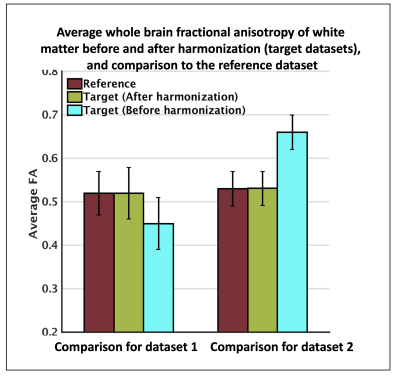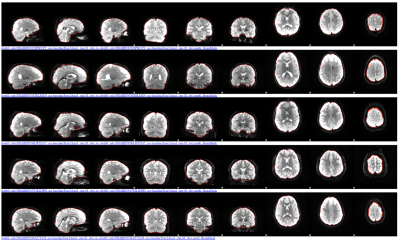Suheyla Cetin-Karayumak1, Fan Zhang1, Tashrif Billah2, Sylvain Bouix1, Steve Pieper3, Lauren J. O'Donnell1, and Yogesh Rathi1
1Brigham and Women's Hospital and Harvard Medical School, Boston, MA, United States, 2Brigham and Women's Hospital, Boston, MA, United States, 3Isomics, Boston, MA, United States
1Brigham and Women's Hospital and Harvard Medical School, Boston, MA, United States, 2Brigham and Women's Hospital, Boston, MA, United States, 3Isomics, Boston, MA, United States
The full harmonized diffusion MRI dataset will allow analysis of ~12,000 subjects altogether, which significantly will increase statistical power with the ability to better characterize the neurodevelopmental changes in the white matter of adolescents.

Harmonization performance on two datasets: one dataset was selected as a reference, two other datasets (from the rest of the 44) were selected as target (dataset 1, dataset 2) to be harmonized to the reference. To evaluate the performance of the harmonization, average fractional anisotropy along the whole brain white matter was computed for the reference, as well as target datasets before and after harmonization. Unpaired t-tests showed large between-dataset differences (p=0.0017) prior to harmonization. Statistical differences were removed after harmonization (p=0.53).

Brain masking of the dMRI data of the ABCD study using our software (https://github.com/pnlbwh/CNN-Diffusion-MRIBrain-Segmentation). Red outlines the brain of the five subjects from the ABCD study (fsl’s slicesdir was used for visualization). Each row shows a different subject brain and each column depicts the different brain slices of each subject.